We’ve been busy this week showing off 50 books that every cult movie fan should have, so check out our previous entries here, here, here and here if you haven’t yet done so! This is the last gasp, so you can finally stop holding your breath and start ranting below about the stuff we missed. We’ll be the first to admit that we missed a lot, but trying to lower our favorite cult books down to 50 while keeping in mind fair representation of different film genres and book styles was no easy task! Believe me, we’d love to hear your opinions as well.
Couple of quick notes:
– These are not ranked in order of best to last, worst to best, or THE HIDDEN 2 to THE HIDDEN. This is just a collection of books you may want to take a look at. Below are titles 10-1.
– Click the cover of the books to buy the goods, all the cool kids are doing it.
10. Nightmare USA: The Untold Story
of the Exploitation Independents (2008)
by Stephen Thrower
It’s important to have coffee table books around the house, so any Jehovah’s Witness that you invite into your home has something to read while you’re in the kitchen making tea. And there’s no better coffee table book for a grindhouse fan to have than “Nightmare U.S.A.,” a mammoth thunderfuck of a volume with enough information on American-made independent regional exploitation movies to keep anyone with even a passing interest on the local crevices of sleaze entertained for hours. Sure, there’s an (excellent) guide to the films themselves, but Thrower’s research into the filmmakers is what moves NIGHTMARE from a reference work to an indispensable book. Beyond just covering the likes of Norman Thaddeus (FRIGHTMARE) Vane, Fredric (ROSELAND) Hobbs and Frederick (KIDNAPPED CO-ED) Friedel, Thrower’s interviews with many of the filmmakers are a compelling glimpse into the world of regional filmmaking, one that no other researcher has ever touched. The color pages, reproducing the memorably garish cover art, just seal the deal. You won’t be able to open to a single page of “Nightmare U.S.A.” without being sucked into an eclectic cinematic K-hole. -P
For further reading: Andrew Leavold’s “Regional Horror Films, 1958-1990” is a worthy companion piece with great interviews and a solid state-by-state guide. We talked to Mr. Leavold about the book here.
9. John Carpenter:
The Prince of Darkness (2003)
by Gilles Boulenger
Perception is a variable. This book, a series of illuminating interviews with the director covering his life in movies from childhood up through his then-most recent film, GHOSTS OF MARS, proves that the outsider and the insider both experience history in drastically different ways. Whereas you and I look at John Carpenter’s filmmaking career and see an unprecedented fifteen-year run of straight classics (arguably from ASSAULT ON PRECINCT 13 through THEY LIVE, or even IN THE MOUTH OF MADNESS), John Carpenter lived that experience, and was burned by it in many ways. What happens when you make a movie as perfect as THE THING and it is shunned by audiences and critics alike? And then to make movies as special as BIG TROUBLE IN LITTLE CHINA, PRINCE OF DARKNESS (which is still under-appreciated, even by Carpenter’s fans!), and THEY LIVE, and to realize that you are out of step with the times for some intangible reason. Carpenter’s tone is fatalistic, not embittered, but the take-away of reading this excellent book is that making original, timeless genre films can be an exhausting uphill battle, regardless of the fact that fans like me look at the charred field and see mostly victories. -J
To hear the Daily Grindhouse Podcast with special guest John Carpenter, click here.
8. BEYOND HORROR HOLOCAUST:
A DEEPER SHADE OF RED (2003)
by CHAS. BALUN
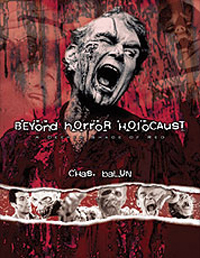 It takes courage to be a film critic. Not the “running into a burning building” kind of courage, but the courage of conviction. To publicly state your feelings on art particularly when you may be the sole voice arguing for your side. Chas. Balun was the notorious film critic and author who worked for Fangoria and Gorezone. He had a no-bullshit, rock and roll kind of style to his writing. While every other critic was star-fucking a film, Balun called out the highs and lows regardless of who was involved. It didn’t matter what the venue was, he was going to bring the house down with a well stated case and a middle finger in the air. He had a brilliant voice and left us too soon, but this book is a great way to remember the rebel of horror criticism. An extensive look at the bloody best the genre had to offer, as only could put it. – G
It takes courage to be a film critic. Not the “running into a burning building” kind of courage, but the courage of conviction. To publicly state your feelings on art particularly when you may be the sole voice arguing for your side. Chas. Balun was the notorious film critic and author who worked for Fangoria and Gorezone. He had a no-bullshit, rock and roll kind of style to his writing. While every other critic was star-fucking a film, Balun called out the highs and lows regardless of who was involved. It didn’t matter what the venue was, he was going to bring the house down with a well stated case and a middle finger in the air. He had a brilliant voice and left us too soon, but this book is a great way to remember the rebel of horror criticism. An extensive look at the bloody best the genre had to offer, as only could put it. – G
For further reading, check out GORE SCORE 2001: THE SPLATTER YEARS.
7. Hollywood Babylon (1965)
by Kenneth Anger
Kenneth Anger was a child actor before becoming one of the United States best known underground filmmakers in the mid 1960s. He originally published HOLLYWOOD BABYLON in 1965, but it was immediately banned – and kept off the shelves for another decade. Filled with rumor, innuendo, lies and unfailingly engaging gossip about Hollywood stars from the silent era to the 1960s, it was famously said (by the New York Times) to be “without one single redeeming merit”. While age (and dozens of similarly styled tabloid books) have dulled some of its age, the mondo style – which includes grisly images from the accident that killed Jayne Mansfield – remains engaging, even as a number of the stories have been continually disproven. Anger followed it up with HOLLYWOOD BABYLON II in 1984. -D
6. How I Made a Hundred Movies
in Hollywood and Never Lost a Dime (1990)
by Roger Corman and Jim Jerome
No single person is as identified with the world of the drive-in movie as much as Roger Corman, so it’s no surprise to see his autobiography on this list. While Corman’s tone may be more conversational than the sensationalistic showmanship of David Friedman, that doesn’t matter because all he has to do is talk. From his early directorial efforts to his Poe films to dropping acid for THE TRIP to branching out onto his own with New World Pictures and jumpstarting the careers of too many filmmakers to name here, Corman’s story is one of the great successes of the industry, and one still being told today. -P
5. Rebel Without a Crew:
Or How a 23-Year-Old Filmmaker With
$7,000 Became a Hollywood Player (1996)
by Robert Rodriguez
Robert Rodriguez is a master of his craft. He can do so many jobs on his own. He shoots, he writes, he cuts, he directs, he soundtracks… the man is a living legend. And the best thing about him? He isn’t one of those people who keeps all his secrets to himself. He has his infamous ten minute film schools on his DVDs that show you how he does it. REBEL WITHOUT A CREW is a must have item for any filmmaker. The best lesson he has ever taught me is that it doesn’t cost millions to make a movie and the only thing stopping you from doing it is you. I meet so many people who go on and on about the “right way” to make films. We need to have this and we need to do that. A lot of the time I hear this coming from filmmakers who have never even made a film of their own. They’re usually just sitting on a script, waiting for someone to come along and make it for them. And you know what? They’ll wait forever and still have nothing. Nothing comes to anyone who just sits and waits for their lives or careers to happen for them. – Jen Soska
4. Profoundly Disturbing: Shocking Movies That Changed History! (2003)
By Joe Bob Briggs
Beneath the good-ol’-boy nature of Joe Bob Briggs, who’s been writing about genre films for longer than a good percentage of our readers have been alive, lies a writer whose interest in film goes much deeper than boobs and body counts. “Disturbing” features Briggs writing about fifteen different “shocking” films that all, in one way or another, influenced film as a whole, and created the world of cinema we relish today. Sure, a couple of the choices are questionable (as much as I love Cronenberg’s CRASH, calling it influential seems to be wishful thinking) but Briggs’s essays are completely compelling, giving each entry just enough of a vintage Briggsian touch while still taking the subject matter seriously. The “For Further Disturbance” pieces at the end of each segment, detailing the film’s influences and influenced, allow just about every different exploitation genre covered – and those that don’t, get mentioned in Briggs’s follow-up, “Profoundly Erotic.” Together, the two form bookends of solid exploitation film history and context that make for must reading. -P
3. Shock Value (1981)
by John Waters
If you’ve ever heard John Waters talk, you’ll be right at home with any of his books – he writes exactly like his speaks, with a smirking, honest casualness that feels like a good friend dishing you the latest gossip. Published on the verge of POLYESTER’s release, “Shock Value” acts both as a behind-the-scenes look at Waters’s early films and as an insightful look into what Waters finds fascinating, and as anyone who’s listened to Waters talk knows, he can’t be beat as a storyteller. You can’t help but to hear Waters’s voice as he writes nonchalantly about showing FEMALE TROUBLE in a jail, uglying up Susan Lowe for DESPERATE LIVING or recounting the life of Edith Massey. Each chapter is like the beginning of the most captivating story you’d ever heard “If you’re ugly, it’s much easier to break into the movies these days,” begins one. “All people look better under arrest,” starts his detailed account of his own fascination with the Manson trials. It’s no wonder that people pay $50 a ticket to watch the man just tell stories on stage, and SHOCK VALUE provides more entertainment (and Waters-conducted interviews with Divine, Herschell Gordon Lewis and Russ Meyer) than any mere evening could supply. -P
2. Psychotronic Encyclopedia of Film (1983) / Psychotronic Video Guide (1996)
by Michael J. Weldon
I wouldn’t be writing this sentence if it weren’t for Michael Weldon. That’s no exaggeration – discovering his Psychotronic Magazine in the early ‘90s let me into the wild, weird world of film that I’ve followed ever since. Just defining the word “psychotronic” as a vague way to be an all-encompassing umbrella for the myriad of genres that cult film fans crave would be enough, but Weldon’s magazine occupied a unique space on the nation’s newsstands, too polished on the outside to be a “zine” yet too loose and chaotic on the inside to sit comfortably next to Premiere.
Psychotronic always provided an amazing cavalcade of interviews, music updates, obituaries and an often controversial letter column (the debate over what actually happened on the set of DEATHSPORT is legendary), but what mattered most were the reviews, and that’s what was compiled in the two Psychotronic books. As distinct a voice as Joe Bob Briggs or Pauline Kael, Weldon’s write-ups on films always came at every subject from the same angle, and each write-up emphasized the important bits, just giving you enough data about a movie to pique your curiosity. Weldon just mentions a brief write-up of the plot, lists some of the cast and gives one or two reasons why the movie is unique – essentially everything you’d need to know before going in, presented in the bluntest of styles. Only with the best and worst of films can you detect any judgment at all, so with these two books on your shelf, you’ve got thousands and thousands of windows to some of the most curious cinematic works ever made, all ready for your own personal insights. There’s no more valuable resource for a cult film fan to have. -P
1. Cult Movies: The Classics, the Sleepers, the Weird, and the Wonderful (1981)
by Danny Peary
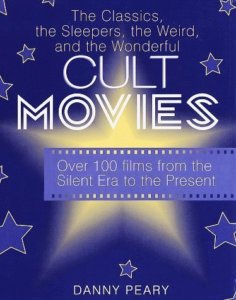
When the Daily Grindhouse staff set about compiling a list of essential cult-film books, one name clearly came up more often than any other: Danny Peary. For many film fans, Danny Peary’s books were the first introductions to older, more unusual, less obvious classic films. It’s near-impossible to imagine now, in the age of the internet where you can find out everything about anything, but there was once a time where many great films needed defending. Danny Peary was one of the most stalwart. His influential books were published in the early 1980s and were an essential building block in what today is a thriving genre-film culture. As I’m a generation or two behind, I didn’t get my first Danny Peary book until the late 1990s, when I was beginning to venture beyond the popular and the current in order to delve into the rich tapestry of older films.
My mom got me a bargain copy of Cult Movies as a gift, the first of the three in the series, and while I do have to credit an excellent undergraduate film program also, this book is assuredly where I first read about movies like THE BROOD, EL TOPO, FREAKS, OUT OF THE PAST, and ONCE UPON A TIME IN THE WEST. And it isn’t only that Peary mentioned films that didn’t get much attention from the mainstream – that may not even have mattered were his writing not so good. These essays are informed, informative, opinionated, passionate, and as readable today as they must have been in 1981 and as they were to me in 1998. Peary quotes other critics, and argues on behalf of misunderstood films when need be, shows an uncommon interest in important aspects of filmmaking (i.e. cinematography, context, and composition) which are too often overlooked by mainstream critics even now. It’s impossible to overstate how important those qualities are in a film writer, and how much they influenced anyone who read these books. If you’re reading a film writer who acknowledges Danny Peary as an influence, you’re in good hands. -J
Friend of the site and friend to movies, Brian Saur is putting together a documentary celebrating Danny Peary’s influence. Follow his progress on Twitter and Tumblr, and watch selected clips on the film’s YouTube channel.
So what did we miss? What do you want to point out that’s always pointed you in the right direction of cult movie fare? Let us know below, or on our Facebook page, or just whine about it silently to yourself and fume how useless internet lists are.
SEE YOU ON FORTY DEUCE,
DAILY GRINDHOUSE
FOLLOW US ON TWITTER @DAILYGRINDHOUSE
- [THE BIG QUESTION] WHAT’S YOUR FAVORITE FEMALE ENSEMBLE IN MOVIES? - July 22, 2016
- [IN THEATERS NOW] THE BOY (2016) - January 24, 2016
- Cult Movie Mania Releases Lucio Fulci Limited Edition VHS Sets - January 5, 2016

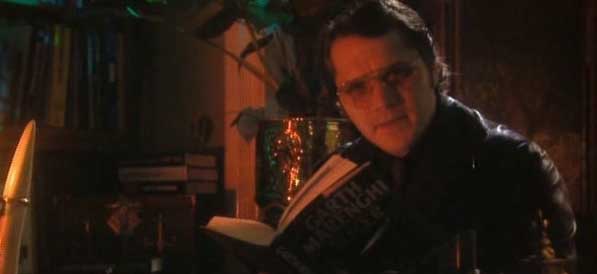
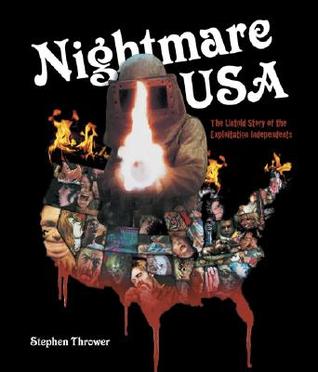
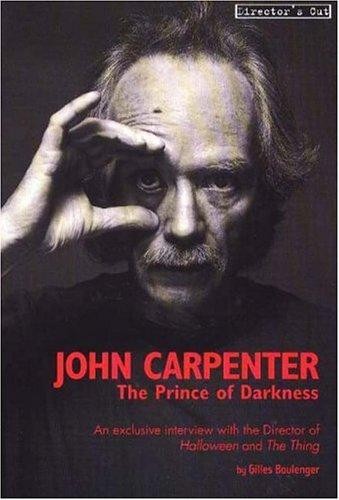
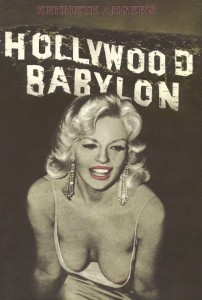
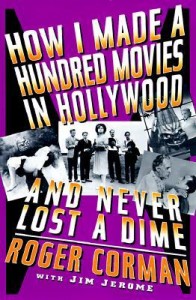
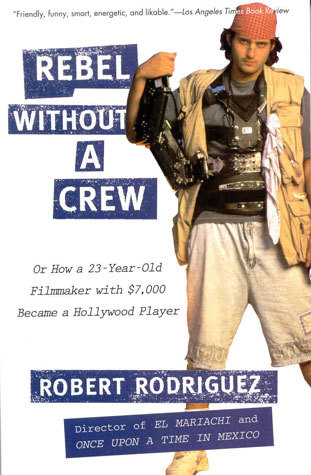
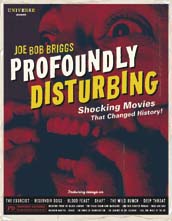

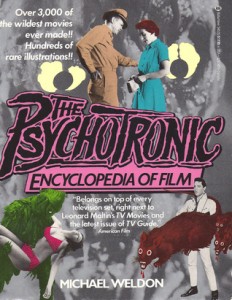




No Comments